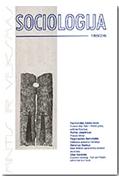Korupcija: teoriniai bandymai apibrėþti ir paaižkinti
Corruption: two theoretical models
Author(s): Jolanta PiliponytėSubject(s): Social Sciences
Published by: Vilniaus Universiteto Leidykla
Keywords: concept of corruption and the problems defining the corruption; theoretical analysis of corruption phenomenon;
Summary/Abstract: The article focuses on the concept of corruption and the problems defining the corruption. It also discusses the possibilities of theoretical analysis of corruption phenomenon. Law, public interest and public opinion have significant role in defining corruption. The problems of corruption determination is: the differences among „corruption“ as it is defined in the official laws of countries, as it effects the public and „corruption“ as it is defined by public. The preparation of the comparative studies of corruption in different countries also is complicated. The article analyzes political corruption as the example of mentioned issues. The theoretical analysis of corruption in the article is based on two models: a Heidenheimer approach (as a macro level theory) and principal – agent approach (as a micro level theory). The advantages and disadvantages of theses two models are presented. The article evaluates corruption phenomenon not only in the context of law and criminal justice, but also in the broader context of political, social, economical and cultural life.
Journal: Sociologija. Mintis ir Veiksmas
- Issue Year: 2004
- Issue No: 02
- Page Range: 83-95
- Page Count: 13
- Language: Lithuanian

